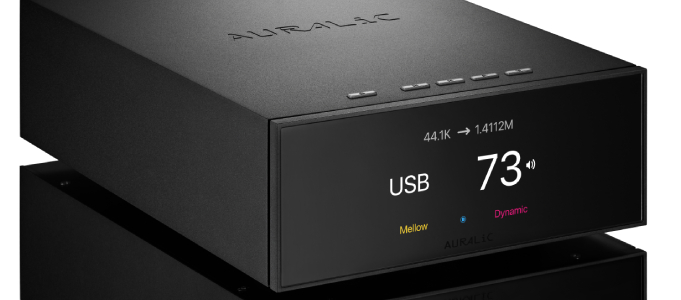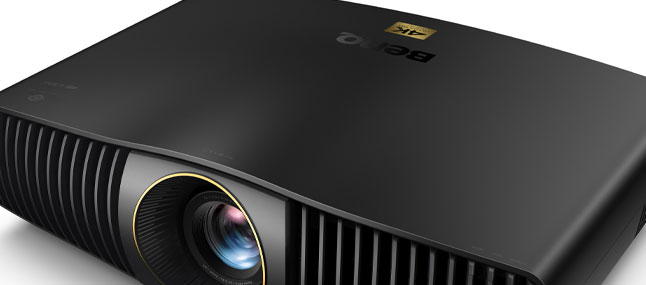Arcam AVR30 AV Receiver Review

Tony O'Brien is beguiled by this new, powerful and versatile high-end AV Receiver…
Arcam
AVR30 AV Receiver
USD $6,000 | SGD $9,999 RRP

Arcam – Amplification & Recording of Cambridge to its older friends and family – has a reputation for building affordable audiophile products, and one that's been nurtured since the mid-nineteen seventies. The company is also well known for its excellent product support, and its designs tend to have a longer life cycle than most. They're usually supported with a steady stream of firmware updates, so you can rest assured that your investment will last.
Latest in the long line of Arcam AV Receivers is the modestly named AVR30. It's touted as a sixteen channel surround sound solution, and capable of decoding all the latest surround codecs from Dolby, DTS, Auro-3D and IMAX Enhanced – the only notable absence being DTS:X Pro. Read between the lines though, and you'll discover the AVR30 has seven channels of onboard amplification. To support channel counts greater than seven, you're going to have to dig deeper in your pocket, and purchase additional power amps.
What separates the AVR30 from its AVR20 little brother – which is also a seven-channel receiver capable of decoding sixteen channels – is the quality of the inboard amplifiers. The AVR20 derives its horsepower from Class AB power amps, whereas the AVR30 uses Class G topology, and is rated at heftier 100W RMS watts per channel (7 channels driven, 1kHz, 0.2% THD 8 ohm).
Class G has been around for a long time now, but Arcam has recently embraced it passionately for its higher-end products. Put simply, it lets amplifiers run in Class A – where the output devices are powered up all the time, and there's no switching distortion – at normal listening levels. When called on to deliver higher levels, often during transient peaks, it 'calls for backup' and switches in Class B power boosted by additional power supplies. Arcam rightly says that Class G mode is more efficient and capable of driving complex speakers with ease. The company has also said that many rivals don't use it because it's a harder technology to get right than conventional Class AB.
Another interesting technology that the AVR30 sports is Dirac Live 3.0, which offers up to sixteen channels of digital room correction with an option to add Dirac Live Bass control at an additional cost. This is one of the most respected room correction systems and works very well if you're willing to set it up properly. The Arcam also offers streaming via smart devices through Apple Airplay 2 and Google Chromecast.

UP CLOSE
The AVR30 is more compact than many high-end AV receivers. Measuring 433x171x425mm it should fit comfortably into most racks, although at 21kg I'd recommend seeking help lifting it. It's nicely finished too, in a warm metallic grey case. The large colour display and oversized silver volume dial and power button confer it with a classy feel. Where other similar designs offer minimal controls, the AVR30 has a thin row of buttons below the colour screen. In addition to controls for menu navigation, there are also shortcuts for surround modes and zone control and headphone and auxiliary inputs.
There are more than enough connections to accommodate most systems, but the Arcam has little in the way of legacy inputs. Its eighteen gold plated speaker binding posts are placed in two rows of nine on top of one another, rather than one row of eighteen. It's here you'll also find seven HDMI 2.0b (HDCP 2.2) inputs and three HDMI ouputs, which are eARC compatible. There's also a comprehensive array of preamplifier inputs and outputs for sixteen channels, in addition to three TOSLINK optical and four coaxial digital inputs. The AVR30 also provides dual IR inputs and 12-volt triggers, Ethernet port, USB socket, FM/DAB aerial socket, RS 232, power inlet, voltage select and three rabbit ears for wireless networking and Bluetooth.

Build quality is excellent but no better than Denon's X8500H, which comes in at roughly half the price. The AVR30 is undoubtedly high end in appearance, yet its oversized volume dial gives it a somewhat lop-sided appearance. The remote control is rather stylish, finished in matt black and accentuated with white and blue buttons – all of which are backlit at the press of a button. In addition to the remote, the carton also contains a calibration microphone, batteries, power cord and user manual.
Assuming this isn't your first rodeo, nothing is daunting about connecting up the AVR30. If it is, you'll need to resort to reading the manual, as there are no on-screen instructions to guide you through the process. As informative as the colour display may be, the lack of an on-screen display means you're going need to be close by during setup, or better yet you can use the web setup. After discovering this little gem, setup was a breeze, everything from speaker setup to naming inputs can be input easily from the web GUI.
Dirac Live room equalisation can be installed and run from either a smart device or laptop, the latter allowing you to use either the provided mic or another such as a MiniDSP microphone. The AVR30 includes the full version, capable of full 20Hz-20kHz frequency correction. Dirac's bass control module can also be added at an additional cost with options for both single subs and multiple subwoofers. Dirac Live Bass Control is claimed to aggregate measurement and location data from subwoofers and speakers, to distribute bass evenly in the room. It's also said to correct low-frequency sound from the main speakers.

Unlike most room EQ systems, Dirac requires a level of interaction from the user. Speaker sizes, distances and crossovers need to be set beforehand. Setting channel levels with an SPL before running Dirac is recommended, but not strictly required. Dirac is easy enough to use, with clearly marked diagrams on where the microphone should be placed.
Unlike many other systems, it also offers a high degree of customisation and versatility. For instance, there's the option to create a custom curve or experiment with curves that Harman have created. You can of course just use the default, but a little bit of knowledge goes a long way, particularly when it comes to setting crossovers, which Dirac offers little assistance with. Likewise, ensuring that “room modes” aren't overcompensated for is a must. None of this is unachievable for new users, and Arcam has a series of videos on precisely how to do this, and there's always the option to enlist your dealer's help.
For my review, the AVR30 was connected to VAF Signature i91 front and centre speakers, and four VAF i90s were used as rear surround and ceiling mounted Atmos speakers. Its subwoofer outputs were connected to twin custom Veritas 10” subs creating a 5.2.2 Atmos layout. Video sources consisted of Panasonic UB9000 and Sony UBP-X700 4K Bluray players and Apple TV, connected directly to a Lumagen Radiance Pro; a Sony VPL-VW270ES projected images onto a Severtson 100” Cinegray 16.9 screen.

SOUND QUALITY
The AVR30 is a prodigiously powerful AV receiver, capable of driving speakers to high listening volumes with ease. As well as having superb bass delineation and control, the big Arcam can extract detail from even the most wanting of soundtracks. Indeed, it's capable of turning a listening environment into a sonic whirl-wind that few can match.
For example, tasked with the race scene from the 4K Blu-ray of Ready Player One, the AVR30 set a new benchmark. Its gutsy amplifiers brought the race to life, giving all my speakers an equal sense of power and sonic impact. Yet it wasn't just about muscle – as it conjured up an amazing amount of detail from the Dolby Atmos soundtrack, and this was coupled with exemplary channel steering which created an immense sound field.
The AVR30 set yet another benchmark in my home theatre with the 4K Blu-ray of Terminator Dark Fate. The waves spilling onto the shore in the opening sequence extended from front to back with a cohesion that drew me into the film. Bass extension was equally impressive. The shotgun blasts of the T800 slammed through my listening room, without being over-inflated nor too controlled.
Switching to A Star is Born, and the AVR30 proved equally adept with music. As Bradley Cooper ripped through Alibi, the Arcam balanced everything from vocals to bass beautifully, bringing the performance to life. It has a knack of allowing the tiniest of details to come to the fore. This created an excellent sense of space with the compressed 5.1 PCM track of Netflix's Annihilation. Equally so with the 4K Bluray DTS:X soundtrack of Bad Boys for Life. As the lads ran through the streets, I could even place the location of the police car sirens in space.

THE VERDICT
 The latest Arcam AV range may have had a bit of a false start with early firmware and teething issues, but loaded with the latest v1.42 firmware and calibrated with Dirac Live 3.09, the AVR30 proved seriously special in my listening room. It looks, feels and sounds like a truly high-end product, one that's effectively now a benchmark for my own home theatre – indeed I can't fault it. Capable of startling amounts of power and detail, the AVR30 had me digging through my media library just to see how good a particular title could sound. As it stands then, the AVR30 is no less than the best AV receiver I have reviewed. That's some praise and is not given lightly.
The latest Arcam AV range may have had a bit of a false start with early firmware and teething issues, but loaded with the latest v1.42 firmware and calibrated with Dirac Live 3.09, the AVR30 proved seriously special in my listening room. It looks, feels and sounds like a truly high-end product, one that's effectively now a benchmark for my own home theatre – indeed I can't fault it. Capable of startling amounts of power and detail, the AVR30 had me digging through my media library just to see how good a particular title could sound. As it stands then, the AVR30 is no less than the best AV receiver I have reviewed. That's some praise and is not given lightly.
For more information visit Arcam
Tony O'Brien
As the owner of Adelaide based ‘Clarity Audio & Video Calibration’, Tony is a certified ISF Calibrator. Tony is an accomplished Audio-Visual reviewer specialising in theatre and visual products.
Posted in:Amplifiers AV Receivers & Processors Applause Awards 2020 Home Theatre
Tags: arcam eng siang av one
JOIN IN THE DISCUSSION
Want to share your opinion or get advice from other enthusiasts? Then head into the Message Forums where thousands of other enthusiasts are communicating on a daily basis.
CLICK HERE FOR FREE MEMBERSHIP






